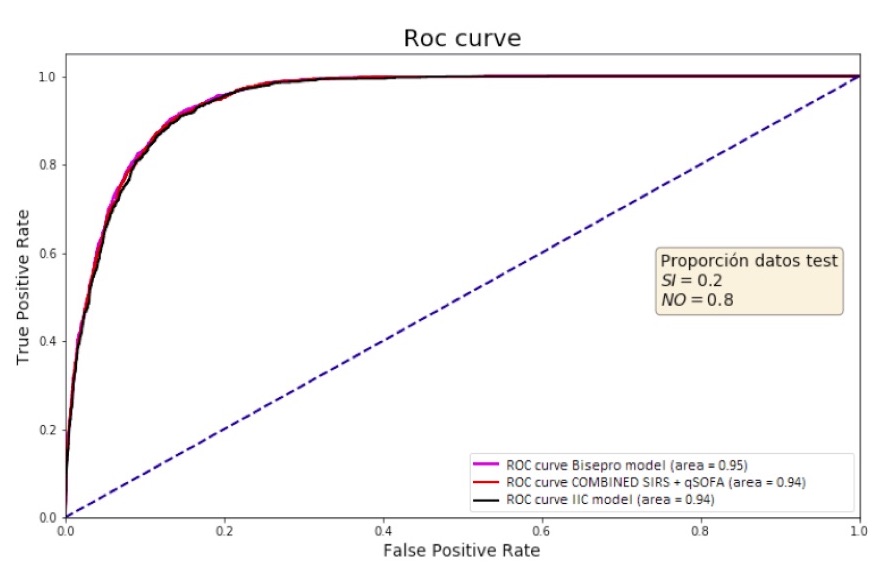Recent studies have shown that the use of AI and ML techniques have improved the detection of sepsis (SE) and septic shock (SS) compared traditional models.
Development of predictive models for the detection of sepsis using AI-ML techniques.
We used AI-ML techniques from historical data from the Electronic Health Record (EHR) in a University Hospital with 450 beds. Retrospective asessed, but the validation of the cases with the diagnosis of SE/SS was made prospectively by the clinical experts of the Multidisciplinary Sepsis Unit within the Code Sepsis Program. We used a SEPSIS.2 definition. The predictive variables that make up the models come from different sources of structured data (clinical, analytical, pharmacological data), as well as from non-structured text from the Triage and Emergency Department (ED) reports. The Mann-Whitney-Wilcoxon test was used to identify statistically significant clinical and analytical variables, with a significance level of 0.01. And to obtain relevant unstructured data Natural Language Processing techniques. The total sample was divided into 2 groups: the 5/7 proportion of the total of randomly selected records constituted the training set and the rest of the records (2/7) formed the test set.
From JAN-2014 to OCT-2018, 815,170 records of the EHR have been analyzed. We included 218,562 adult patients from all areas of Hospital (78% from ED) divided into 2 groups: 1) 9301 (4.6%) had SE/SS; and 2) 209,261 (95.4%) who did NOT have sepsis. A total of 3,927 variables have been extracted from the different data sources. By relevance 244 (6.2%) variables associated with SE/SS have been selected. We have analyzed 5 predictive models: Sepsis.2, SEPSIS.2 plus qSOFA, general ML (IIC), ML + Sepsis.2 (BISEPRO), ML + Sepsis.2 + qSOFA (COMBINED), Table I and Figure 1. BISEPRO was the best approximation of the resulting prediction that offers an AUC-ROC of 0.95 (95% CI 0,94-0,96). . Table 1:
| SEPSIS.2 | SEPSIS.2+qSOFA | IIC | COMBINED | BISEPRO | |
| AUC-ROC | 0,89 | 0,88 | 0,94 | 0,94 | 0,95 |
| Sensitivity | 0,97 | 0,98 | 0,93 | 0,93 | 0,94 |
| Specificity | 0,69 | 0,62 | 0,83 | 0,83 | 0,83Figure 1: |

The use of predictive models based on AI-ML and has provided more dynamic and precision models for the detection of patients with SE/SS.
- Co-funded by MSD and IDISBA